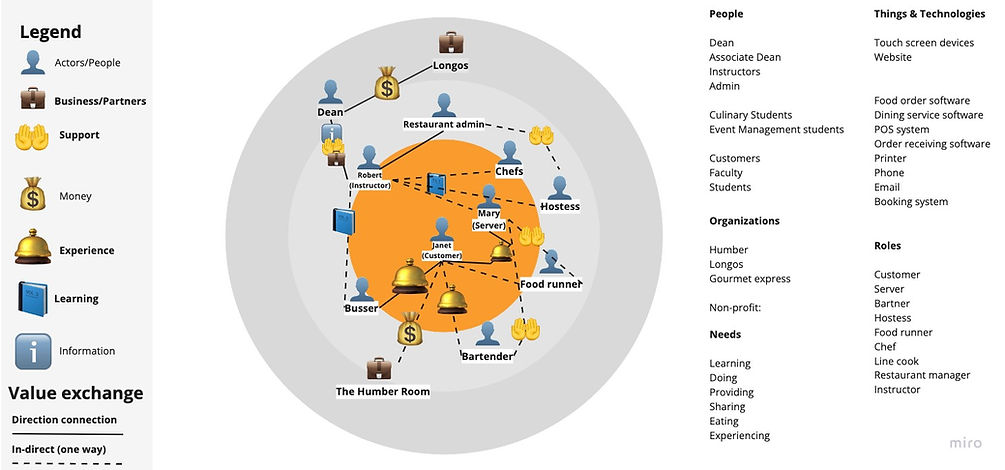Lillian
UX Design and Research | Service Design
Humber Room
Uncovering and addressing service pain points to enhance the student-run restaurant lab experience.

Project Overview
A student-run restaurant lab combining hospitality training with real customer service.
This project focused on understanding business goals, customer experience, and student learning objectives within a live service setting.
Role: UX Researcher, Designer and Service Designer.
Contributions: Service Audit, Personas, Journey Maps, Co-creation workshop facilitation, Prototypes.
Team: Initial research was conducted as a team of four, along with ideation workshops and co-creation output.
Duration: 4 months

Discovery Phase
.
Service Audit
My classmates and I toured the Humber Room with the associate dean to conduct a service audit and gain a deeper understanding of how the student-run restaurant lab operates.
Interview
This involved interviewing him about the program.
We also discussed the program's objectives, challenges, and administrative expectations with the associate dean.
Follow up visit
To experience the service firsthand, two of my peers and I completed the entire booking and dining process as guests.
These activities provided valuable insights into both the front-stage and backstage touchpoints, revealing how student roles, operational processes, and guest interactions come together to create the overall service experience.


Personas & Journey Maps
I developed personas for students, guests, and instructors to capture their goals and pain points within the Humber Room experience.
Each journey map visualized touchpoints, emotions, and challenges, highlighting moments of success and opportunities for improvement.
.png)


.png)
Stakeholder Map
Gathering data from the service audit, I visualized the key actors, interactions, and value exchanges within the Humber Room experience, showing how students, guests, and staff connect across the service ecosystem.
.jpg)
Define Phase
Service Blueprint
I created a service blueprint to map the Humber Room's guest and student experience, highlighting touchpoints and support actions. This helped identify areas impacted by interactions between students, guests, and instructors.

Certain details are blurred for privacy.
Design Phase
Problem Statement
How might we help front-of-house students assess and improve their service skills more effectively within a limited timeframe?
Co-Creation Workshop
Together with two of my peers, I facilitated a co-creation session to brainstorm ways front-of-house students could better assess their learning outcomes during live restaurant labs.
.jpg)
.jpg)
Prototyped Solution
Low-fidelity prototypes were created to visualize service setup cues and visual reminders during simulations.
-
Community Bulletin – shared space for peer feedback and communication.
-
Score Card – a structured self-assessment tool for tracking competencies.
-
Visual Support – quick reference guides to reinforce service steps and best practices.


Reflection & Learnings
This project deepened my understanding of how service design can bridge learning and real-world experience. Mapping the Humber Room’s operations revealed how even small process shifts, like visual reminders or structured feedback, can support both service quality and student growth. I learned that improving a service system often means designing for people’s confidence, not just their performance.